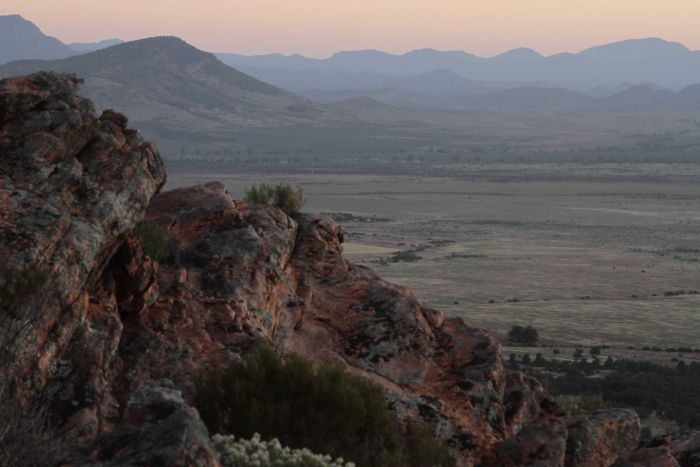Life on the Line: Farming against the odds and George Goyder's timeless advice
Updated
 Video: Ginny Stein meets the farmers harnessing technology to tame the land north of Goyder's Line
(Lateline)
Video: Ginny Stein meets the farmers harnessing technology to tame the land north of Goyder's Line
(Lateline)
On the plains below the Flinders Ranges, stone ruins of farm houses stand as tombstones for dozens of livelihoods that succumbed to drought.
This is north of Goyder's Line, the imaginary boundary running across South Australia marking where good country ends and dry country starts.
Surveyor George Goyder mapped the line in 1856 and 150 years on it is still used by farmers to indicate the boundary for decent rainfall.
To survive north of the line, the Mudge family has pioneered the use of technology to sample soil and gauge when and what to plant.
Barry Mudge's methods have been promoted by agricultural scientists both in Australia and internationally.
Mr Mudge was an early adopter of using long-range weather forecasts and has also developed economic modelling for crops.
But the biggest impact to his bottom line has come from soil sampling, which involves drilling down to about one metre deep to measure moisture and nutrients.
"It's about capturing how much moisture we've got, what is the nutrient level, and then adjusting the crop and the nutrition of the crop according to that information," he said.
 Photo:
Barry Mudge's techniques are now being used by farmers around the country. (ABC News: Ginny Stein)
Photo:
Barry Mudge's techniques are now being used by farmers around the country. (ABC News: Ginny Stein)
The data gathered helps decide which crops to sow and when in the season to begin planting.
"I think that variability actually is our friend. We can use the variability, it provides opportunities for how we farm," he said.
"It's a case of balancing best practice with a healthy dose of risk management."
From 100 farmers to three
As a fourth-generation farmer in the region, Mr Mudge has seen extreme conditions take their toll.
"There were 100 farmers, all on sort of 400-acre lots. Now I think there is effectively about three of us left," he said.
At the time of his expedition, Mr Goyder was ridiculed by many, particularly political leaders who were eager to see South Australia expand.
 Photo:
Surveyor George Goyder travelled the state on horseback in the late 1850s. (Library of South Australia)
Photo:
Surveyor George Goyder travelled the state on horseback in the late 1850s. (Library of South Australia)
But the abandoned farm houses are testament to Mr Goyder's findings and 150 years on they are still relevant.
"To be able to ride around this country on horseback and identify some areas that were better than others for cropping or otherwise, was a remarkable feat," Mr Mudge said.
He hopes that thanks to technology, his children will be able to continue to farm on the land north of the line for generations to come.
"We just have to make sure we have a system in place. It's extreme farming. Well, it's farming with a difference," he said.
"It's an evolution, it doesn't stop. It's a continuous looking for the technology that can allow us to do this job better, to allow us again to capitalise on the opportunities, and a healthy dose of respect for when things aren't going right."
Topics: sustainable-and-alternative-farming, agricultural-crops, sa
First posted










